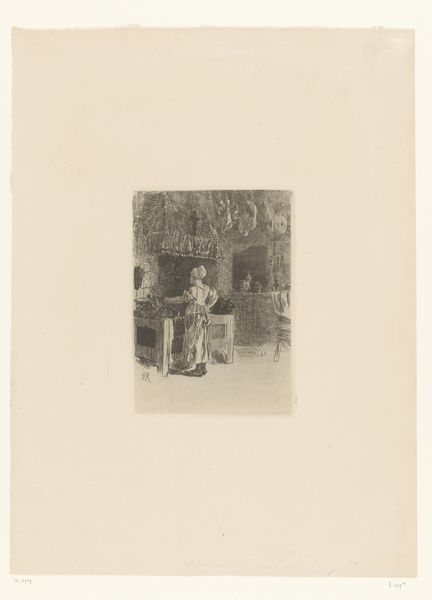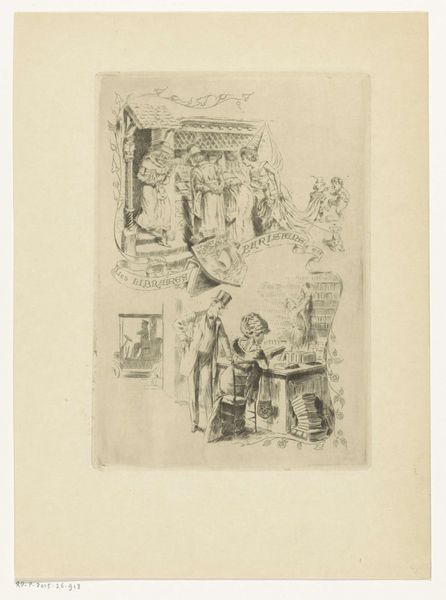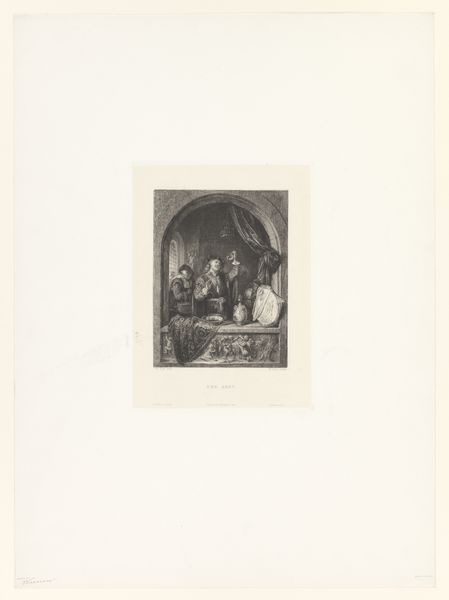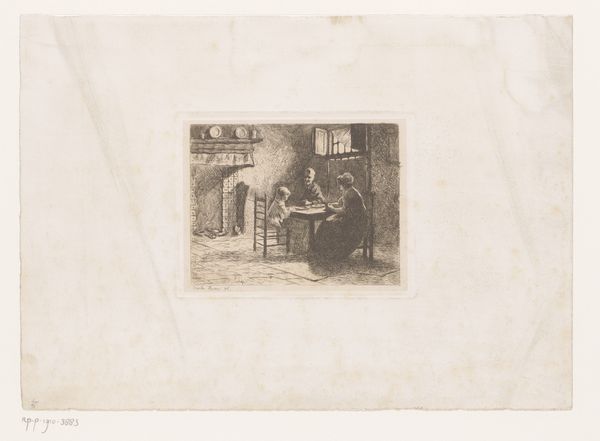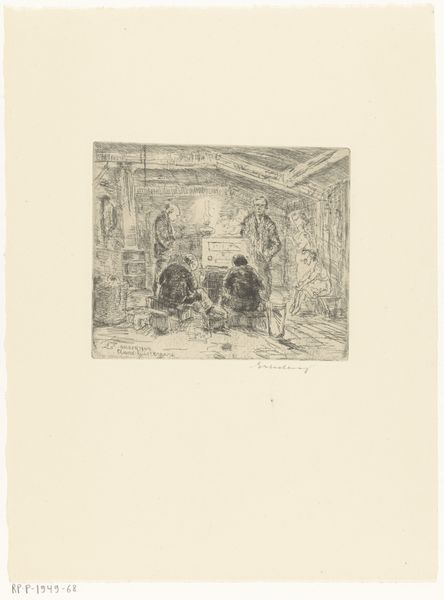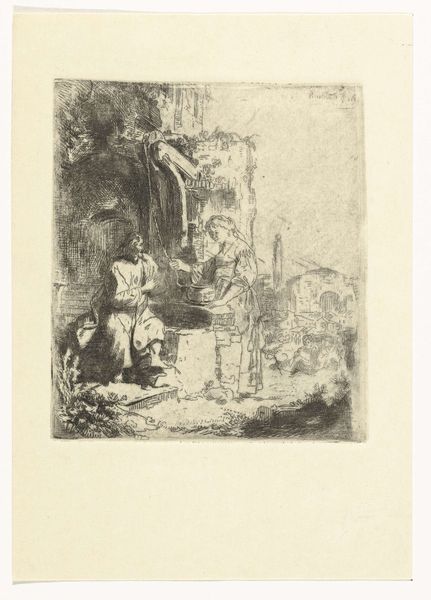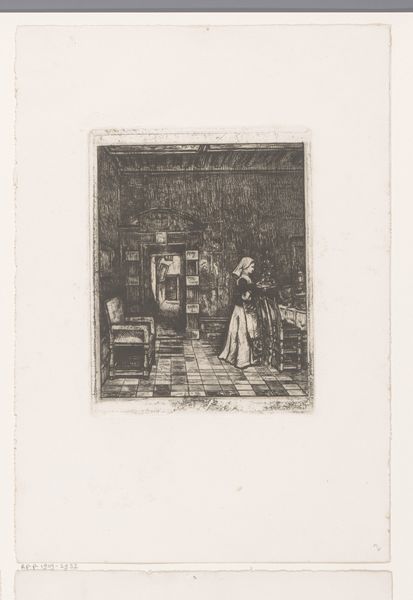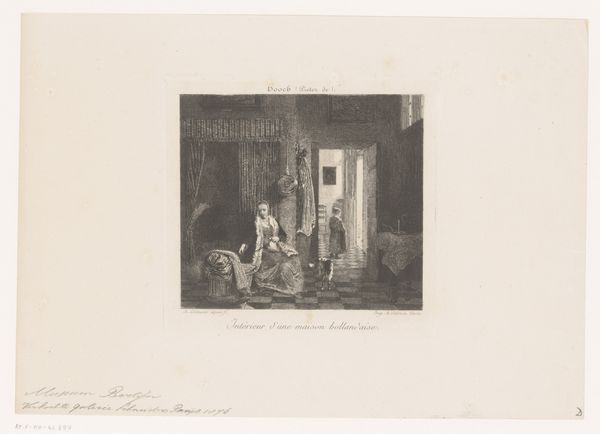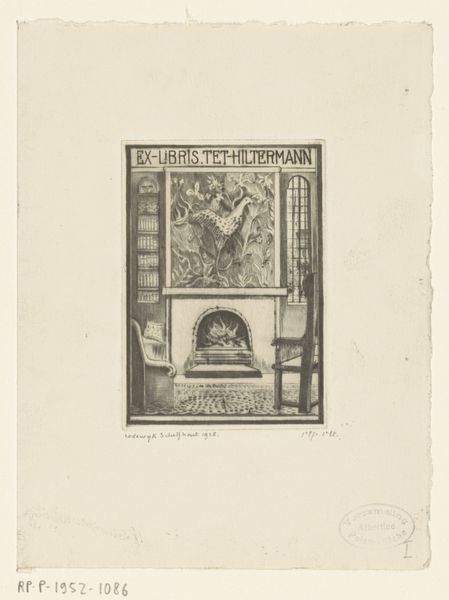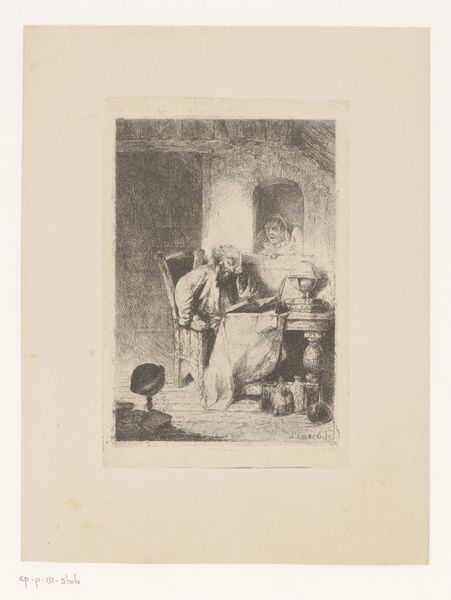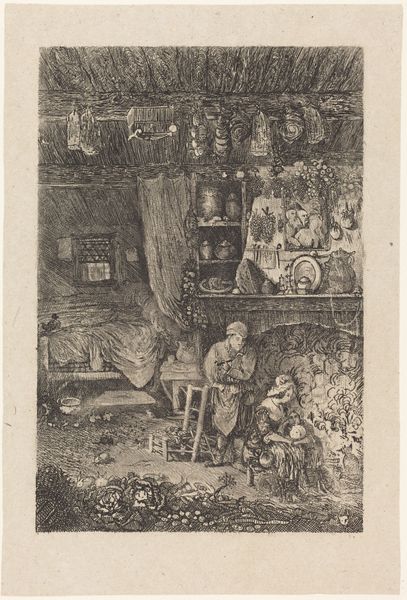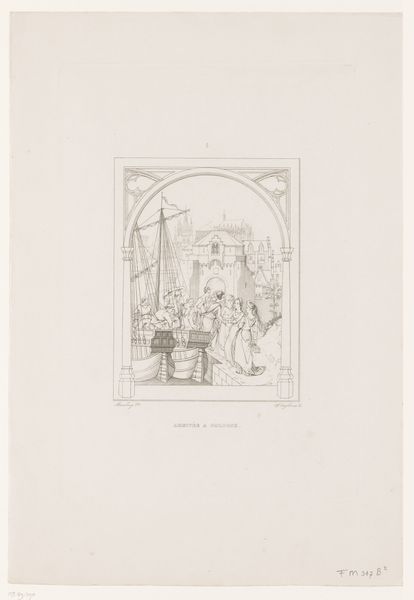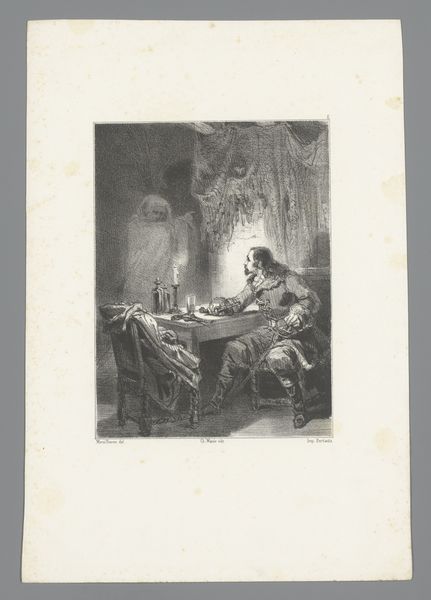
drawing, print, etching
#
portrait
#
drawing
#
16_19th-century
# print
#
etching
#
romanticism
#
genre-painting
#
realism
Dimensions: height 87 mm, width 80 mm
Copyright: Rijks Museum: Open Domain
Editor: Here we have Henri Leys's etching, "Two Figures Looking into an Interior with Sleeping Woman," placing it somewhere between 1825 and 1869. The detail is amazing! The lines seem so delicate. What do you see in this piece, especially beyond just a genre scene? Curator: Well, the spatial dynamics are immediately interesting. Two men peer into the room, essentially invading the private sphere of the woman. Considering the era, what commentary might Leys be making about the male gaze, the positioning of women, and social hierarchies? Editor: So, not just a quiet scene, but maybe a critique? Do you think that’s a bit of a stretch, given its time? Curator: Not at all. The male gaze, and art's perpetuation of it, has deep roots. Who has the power to look, to observe, and who is being observed? Is she truly "sleeping" or just rendered powerless? The details are less innocent when viewed through a lens of gender and power. The architectural separation is significant here, too; the men occupy a liminal space, a window between worlds, suggesting perhaps their ambiguous place in the social order. Editor: I see what you mean. It’s unsettling in a subtle way. It makes me think about who's allowed to be vulnerable, and who's not. Curator: Precisely. And it challenges us to consider art's role – then and now – in either reinforcing or disrupting those dynamics. What do you take away from analyzing these intersections of social context and artistic expression? Editor: I will definitely never look at a "simple" domestic scene the same way again. Seeing the potential for social critique… it just adds so many layers! Curator: Absolutely, art reflects society but can also, when viewed critically, challenge its viewers to think beyond the surface and examine hidden dynamics of identity, power and perception.
Comments
No comments
Be the first to comment and join the conversation on the ultimate creative platform.
